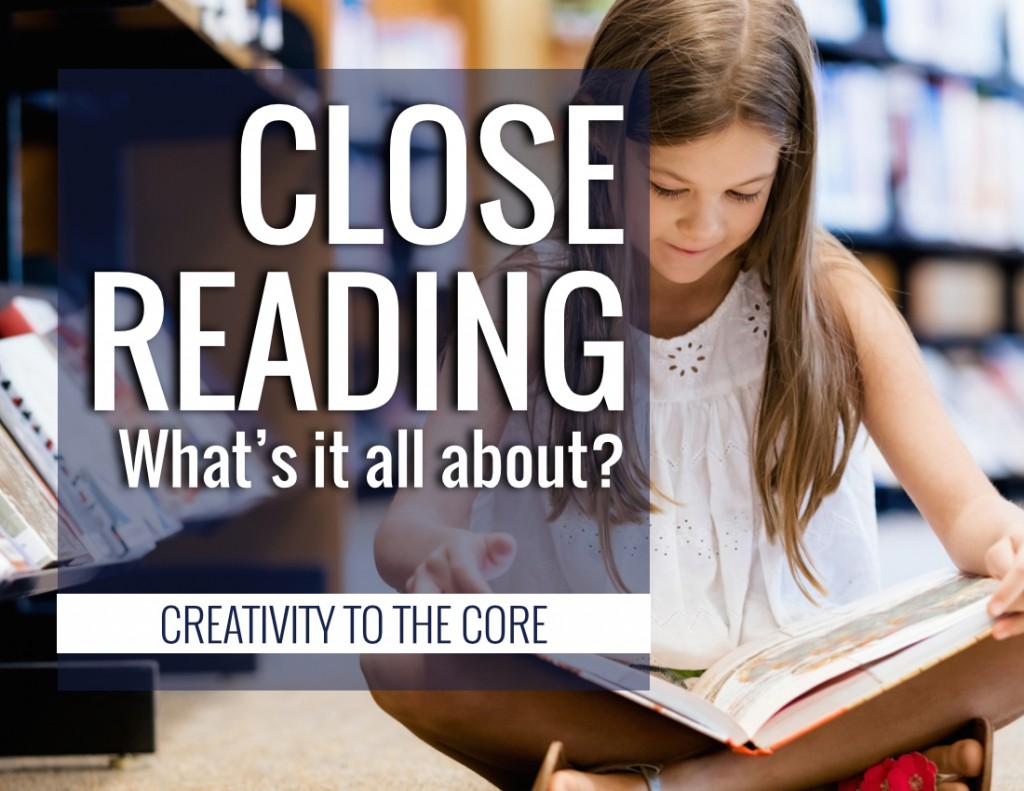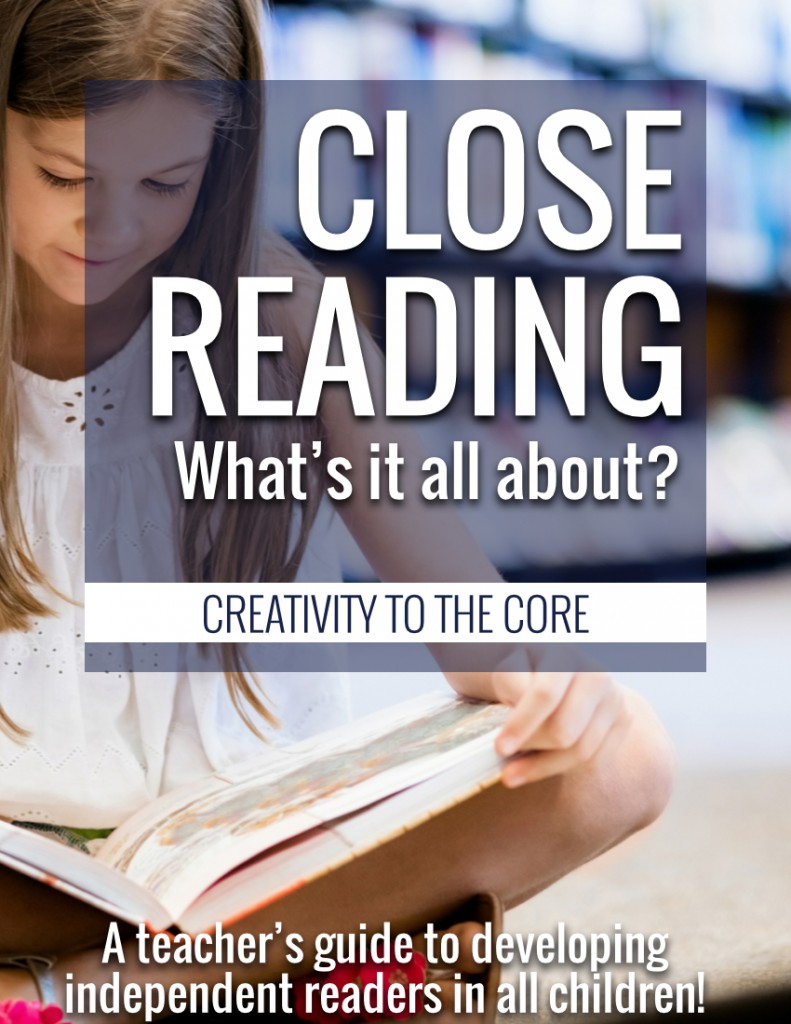Close reading is the big hype these days with Common Core and the push to expose ALL students to complex texts. One of my final Master’s research papers was focused on close reading, so I decided to share some of the big ideas with you. Hopefully, this will answer some common questions that are floating through teacher minds!
These 5 topics are essential to close reading.
1. What is close reading?
2. Background Knowledge
3. Complex Texts & Text Dependent Questions
4. Repeated Readings
5. Annotation
Articles and research are included throughout these posts. A citation page is included here in case you are interested in learning more.
What’s close reading all about?
Close reading: “an instructional routine in which students critically examine a text, especially through repeated readings” (Fisher & Frey, 2012a).
Close reading was used in high school and college in the past, BUT the implementation of Common Core has pushed teachers to use close reading in elementary school.
So, there must be some modifications made in elementary schools. The teacher must build students toward independent reading. As teachers help students dig through reading passages, they are helping students to build habits of great readers.
I think this quote explains it perfectly: “The teacher’s goal in the use of Close Reading is to gradually release responsibility to students – moving from an environment where the teacher models for students the strategies to one where students employ the strategies on their own to when they read independently” (Brown & Kappes, 2012).
Close reading gives students the opportunity to take NEW information from the text and add it to their background knowledge and experiences. When they do this, they increase their schema (what they already know).
Close reading can be used with:
-Several genres
-Several formats
-Literature
-Informational text
BUT, {This is a biggie!} it is only appropriate with some texts.
Close reading does not work with everything. It should not be used with long chapter books or even some multiple page passages. It is not an appropriate strategy for everything and anything. You have to be thoughtful and purposeful when you choose a passage.
AND, it should go along with other instructional practices throughout the school day.
This is simple. Just don’t make it the only thing you do. Yes, there’s a huge push for it in schools. Yes, it is great for students in certain environments. I love how Brown and Kappes (2012) explain it, “Close Reading of text is one important strategy for fostering independence and analytic skills.”
Remember: It is only one strategy. It is not the only strategy to use in the classroom. There are many others that are successful in the classroom. Choose a strategy that fits your students, your topic, and your teaching style.




Great information! Looking forward to reading more.
Awesome… looking forward to reading more!
Great post! I can't wait to read more!
Tessa
Spotlight on Kindergarten
Love this post. Looking forward to reading your others in this series!
Sandy
Crazy About Second Grade
Love your post! I can't wait to read more!!
Katie
Simply Creative in KY
I can hardly wait to read more.